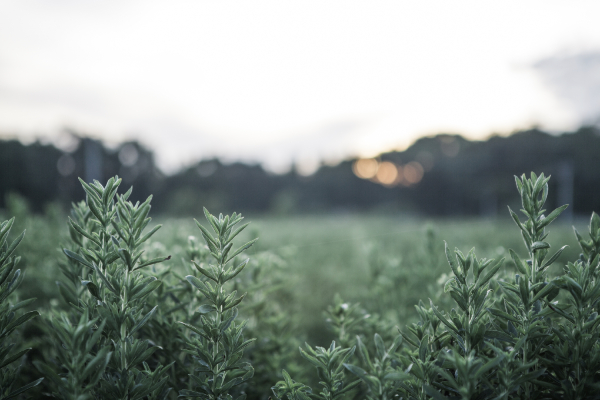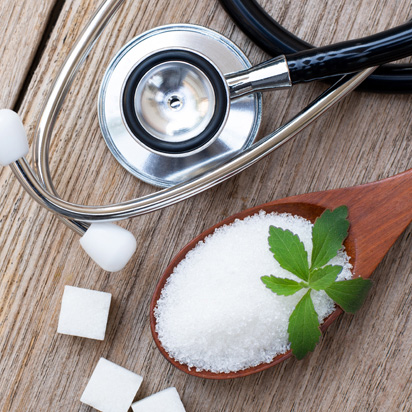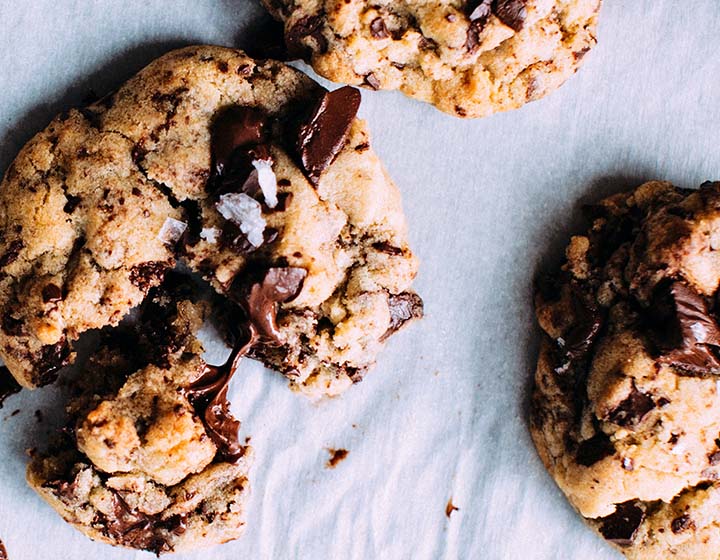
What does stevia taste like, and what makes stevia sweet?
Stevia tastes sweet. The sweet taste comes from naturally occurring compounds within the stevia plant called steviol glycosides. There are over 70 recognised steviol glycosides in the stevia plant, which can be used to sweeten food and beverage products. One of these molecules, called Reb M, is acknowledged as the most sugar-like in its sweet taste. Using different combinations of these ingredients creates clean, sugar-like taste, creating the ideal zero-calorie eating and drinking experience in your favourite foods and beverages.
Some forms of stevia sweeteners can also taste bitter, have liquorice-like aromas and metallic and astringent mouthfeels. These other attributes, referred to as off-notes, are from older, less desirable forms of stevia, which were popular when stevia was a new and emerging sweetener.
Stevia is a leafy green plant that is native to South America. The botanical name for stevia is Stevia rebaudiana. It was originally used as a natural sweetener by indigenous populations in Paraguay and Brazil, who called it Ka´a He´e, which translates to “sweet herb” in Guarani (an indigenous language in Paraguay). Stevia has many benefits over sugar: it doesn’t contribute calories when consumed as part of a food or beverage, does not cause tooth decay and does not cause a spike in blood sugar.
Most stevia sold in stores and used in products are purified stevia leaf extracts that contain one or more of the sweet-tasting steviol glycosides. Sometimes individual steviol glycosides are specified in the ingredient list. Some commonly used steviol glycosides are rebaudioside M (also known as Reb M), rebaudioside A (also known as Reb A) and stevioside.
Stevia vs sugar sweetness
Stevia leaf extracts can be 50-300 times sweeter than table sugar (sucrose) and are considered to be high-potency sweeteners (HPS). Stevia leaf extracts, while of a natural origin, are similar in sweetness intensity to some artificial sweeteners currently on the market. While all may be considered HPS, PureCircle stevia sweeteners are recognised as plant-based and non-GMO. This makes stevia sweeteners an attractive alternative to food and beverage brands trying to remove artificial ingredients from their product label.
Since stevia leaf extracts are extremely sweet, a tiny bit goes a long way. Often, other ingredients such as allulose, erythritol, dextrose or maltodextrin are used to evenly disperse the intense sweetness of stevia leaf extract and provide other functional aspects similar to sugar, such as bulking. Many HPS sold in stores (i.e., sucralose, aspartame, saccharin) incorporate similar ingredients for this reason.

Where can I use stevia?
Stevia is a plant-based sweetener that can reduce or replace sugar in just about everything. From beverages to baked goods, breakfast to dessert and everything in between, stevia is an ideal choice to add sweet taste to foods you love, all with zero calories.
What type of stevia should I buy?
The stevia typically available for home cooking is high-purity stevia leaf extract combined with a functional ingredient to help use it the same way you would use table sugar. These ingredients are usually sugar alcohols (like erythritol), dextrose, maltodextrin or soluble fibres.
Stevia is frequently sold in one-to-one sugar equivalent “spoonable” packages and in single-serve packets. The packets are a convenient option when sweetening coffee or tea. Spoonable stevia is helpful when using larger amounts, but many manufacturer recipes will also include the number of single-serve packets needed.
There are also products on the market that blend stevia with sugars such as white sugar, brown sugar and honey. These products provide a partial sugar reduction (usually 50-75%) while maintaining some of the taste and functional benefits sugar provides. The white and brown sugar blends are great for baking. The honey blends are perfect choices for tea and anything else you would normally drizzle honey on such as fruit or yoghurt.
Using stevia in beverages
One practical application for stevia is for sweetening coffee and tea, especially with the convenience of single-serve packets. The majority of people who consume these beverages add a caloric sweetener such as sugar, milk or cream or both, resulting in an average daily caloric increase of 69 calories.1 Over the course of a day, many heavy coffee and tea drinkers use their entire recommended daily allotment of no more than 5-10% of total calories from added sugars (about 6-12 teaspoons).2 This is especially true for those who frequent coffee shops where blended coffee drinks can contain more than 25 teaspoons of added sugar.
Stevia presents an attractive alternative for replacing sugar in both coffee and tea. It has a sugar-like taste and easily dissolves into both hot and cold beverages. Stevia is also a great addition to smoothies, refreshing non-alcoholic beverages and alcoholic cocktails.
Cooking and baking with stevia
When cooking and baking, stevia can be used to replace some or all of the sugar in most recipes. Since most purified stevia leaf extracts are already blended with other bulking ingredients, you don’t need to worry about adding extra ingredients (e.g., applesauce, yoghurt, egg whites) commonly used when replacing sugar. To make things simple, many manufacturers provide online recipes specifically developed to taste great when using stevia.
Stevia has several benefits when cooking and baking. Unlike many artificial sweeteners, stevia is stable when heated at high temperatures. Stevia can also increase sweetness when combined with caloric sweeteners such as honey, molasses or sugar. You may find that stevia can also enhance the flavour of other ingredients in recipes such as vanilla and chocolate.
For many types of recipes, stevia works great to replace 100% of the added sugar. For breakfast, stevia is great in baked oatmeal or pancakes. It is an excellent choice for creamy puddings and homemade frozen desserts. Stevia is also useful in replacing the hidden sugars found in many foods such as salad dressings and other table sauces.
When baking, blending stevia with sugar is ideal. As a general rule, it is suggested to include at least ¼ cup of sugar in most sweet baked-good recipes. Since stevia does not caramelise like sugar, an ingredient like allulose can replace some of the functional characteristics of sugar. Sugar also helps with the crisp texture of many baked goods such as cookies. For yeast-raised baked goods such as bread, stevia cannot be used as a substitute for the small amount of sugar needed to activate the yeast.
Other stevia science and research

What is stevia?

Stevia safety

Diet, metabolism and weight management

Stevia taste science: what is taste?

Stevia and diabetes management

2022 Sugar Reduction Life Cycle Assessment
References
- An, R. & Shi, Y. Consumption of coffee and tea with add-ins in relation to daily energy, sugar, and fat intake in US adults, 2001–2012. Public Health 146, 1–3 (2017).https://doi.org/10.1016/j.puhe.2016.12.032
- World Health Organisation. WHO | Sugars intake for adults and children. WHO WHO/NMH/NHD/15.2, (2015).http://www.who.int/iris/handle/10665/149782
